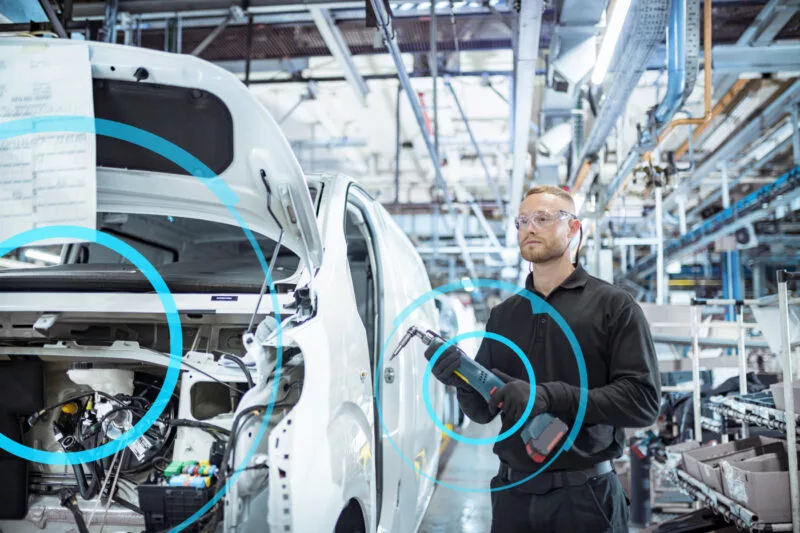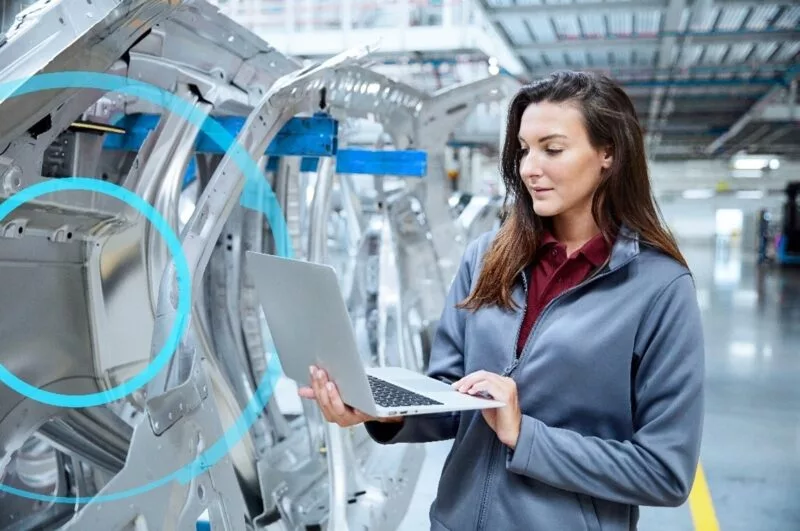How Automated Assembly Processes Boost Manufacturing Quality
In the rapidly evolving automotive industry, maintaining production speed and quality is more crucial than ever to stay ahead

In the rapidly evolving automotive industry, maintaining production speed and quality is more crucial than ever to stay ahead of the competition. Each week brings news of innovative electric vehicle (EV) pioneers, raising the bar for established automotive manufacturers to deliver cutting-edge products within shorter production cycles. To meet this increasing market demand, production planners must maximize assembly speed while minimizing time-consuming and costly rework operations.

In this article, we will examine how automation can eliminate non-value adding and error-prone manual tasks, particularly for vehicle identification, resulting in improved assembly quality and speed through process automation.
The Importance of Assembly Line Control
Manual operations along the assembly line pose a significant risk of human error, leading to incorrect assembly tasks and subsequent rework procedures. These errors not only cause inefficiencies and waiting times but may also jeopardize product quality and driver safety if defects are discovered too late.

Automation is critical, starting with tasks that are frequently prone to errors and those that have a substantial impact on vehicle assembly when performed incorrectly. One such task is the manual barcode scans required to check in a vehicle for a new assembly sequence, unlocking subsequent process steps. Ensuring 100% accuracy in this procedure is essential to ensure that each vehicle variant receives the proper treatment.
Emergence of New EV Pioneers
For established automotive OEMs with brownfield factories, replacing manual assembly operations with digital automation technologies is a major challenge. Retrofitting existing assembly lines incurs costs in terms of lost units for every minute spent. However, the pressure to automate is intensified by the success stories of EV pioneers who can set up fully automated greenfield production facilities in under a year. These pioneers prioritize zero-defect tolerance and data-driven decision-making, highlighting the need for established manufacturers to compete in terms of production speed and flexibility. Incorporating automation in assembly lines that have existed for years becomes imperative to stay competitive.
KINEXON: A Reliable Partner in Assembly Automation for BMW
With nearly a decade of experience, KINEXON and BMW have successfully introduced a new level of assembly automation in eleven production plants worldwide. Overcoming the unique challenges of each automation rollout — whether in brownfield or greenfield settings — demonstrates the trusted partnership between KINEXON and BMW. Three additional rollouts are planned for the coming years, further reinforcing the collaboration.

BMW's Implementation of KINEXON's Vehicle Announcement for Enhanced Autonomy
To meet the increasing demand for quality control and documentation amid a growing number of new models and derivatives, BMW utilizes RFID technology for safety-critical and customizable components, such as mirrors, headrests, and steering wheels. This technology enables large-scale tracking and content verification, ensuring that each vehicle is correctly assembled according to the unique specifications of individual customers. To learn more about accompanying use cases, download the BMW case study.
With approximately 12,000 vehicles produced each day, each with its own set of specifications, BMW’s Digitized Assembly Control plays a critical role in managing the complex manufacturing processes.
The Impact of Vehicle Announcement
Real-time knowledge of which vehicle is passing through each assembly sequence empowers production planners to precisely synchronize automated and manual assembly procedures.

This synchronization enables:
- Comprehensive traceability of vehicles throughout the production journey
- Significant improvement in production speed and quality
- Flexibility to incorporate new production technologies
Implementing KINEXON Assembly Line Control as a leading or emergency control system achieves these outcomes.
Customer Challenges: Simplifying Vehicle Identification with KINEXON
Manual barcode scans for vehicle identification along the assembly line are time-consuming and error-prone. These tasks must be performed at each check-in step in a new sequence, resulting in multiplied time wastage and increased likelihood of human error at every assembly step.
KINEXON’s vehicle announcement reduces this manual interaction to just one step. As soon as a vehicle enters the assembly line, it is equipped with a tag that allows precise tracking of its position in real-time, eliminating the need for manual barcode scans.

Assignment zones equipped with the assignment dashboard instantly inform shopfloor workers whether the vehicle has been registered on the assembly line. Assembly areas along the line classify specific areas covering one or more sequences, enabling clear tracking and determination of the appropriate actions. The interface controller also facilitates control of manual tooling operations, camera systems, assembly robotics, quality gates, and other systems. Additionally, each event is tracked, ensuring traceability of all vehicle assembly operations.
Why Customers Choose KINEXON
KINEXON is the preferred choice for assembly automation due to several key advantages:
- Real-time component verification during the assembly process, providing precise and up-to-date information about product status.
- Advanced quality control options to ensure that each product meets the exact specifications and requirements of customers.
- Real-time information and analysis of the assembly process, enhancing reliability and efficiency by rapidly addressing any issues that may arise.
- Substantial cost savings resulting from improved quality control, waste reduction, and increased production efficiency.

By selecting KINEXON, customers can overcome the challenges of accelerating assembly processes and achieve a new level of automation, enhancing manufacturing quality and speed.
Empowering Automotive Manufacturers with Assembly Line Control
In today’s rapidly changing automotive market, production speed and quality demand a higher level of automation to stay competitive. With our extensive experience automating approximately 14 million square feet of BMW’s production area worldwide, we understand how to automate manual assembly processes in brownfield and greenfield plants, leading to annual operational cost savings of over $10 million. Real-time knowledge of each vehicle’s assembly sequence enables production planners to precisely synchronize automated and manual assembly procedures, ensuring comprehensive traceability, increased production speed, and improved quality through the KINEXON Assembly Line Control solution.
Contact us to learn more about how KINEXON Assembly Line Control can boost manufacturing quality and accelerate assembly processes
More Resources
Stay Up to Date
Subscribe to our newsletter and stay connected. You can unsubscribe at any time.
Ready to automate your industrial operations?
Schedule a meeting with our experts to connect and automate your operations.
Get in touch